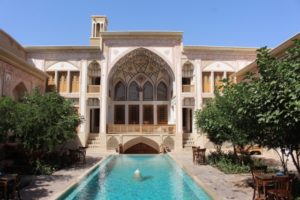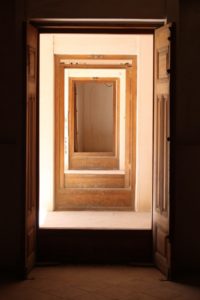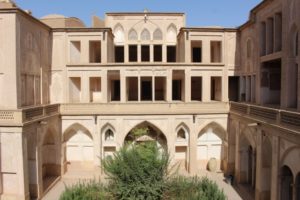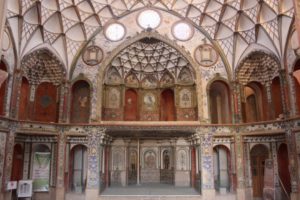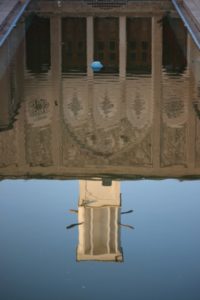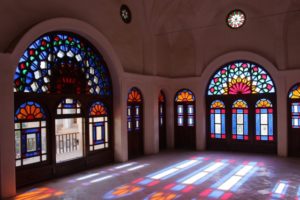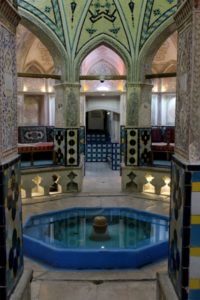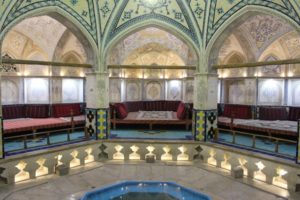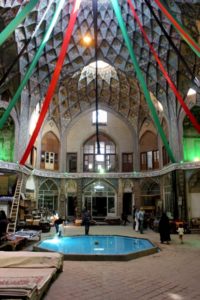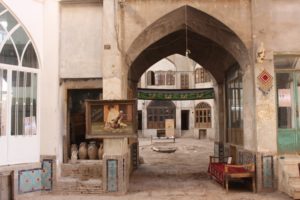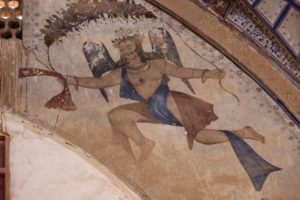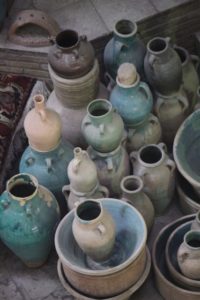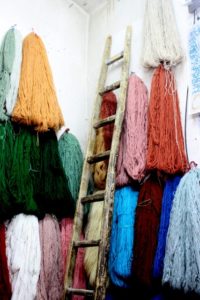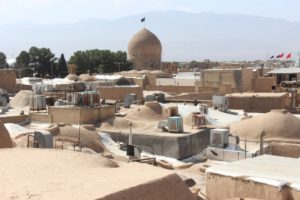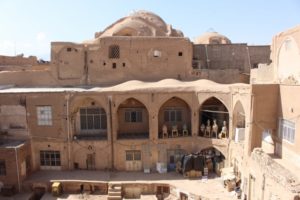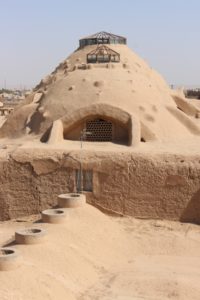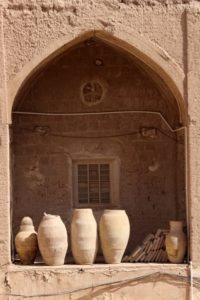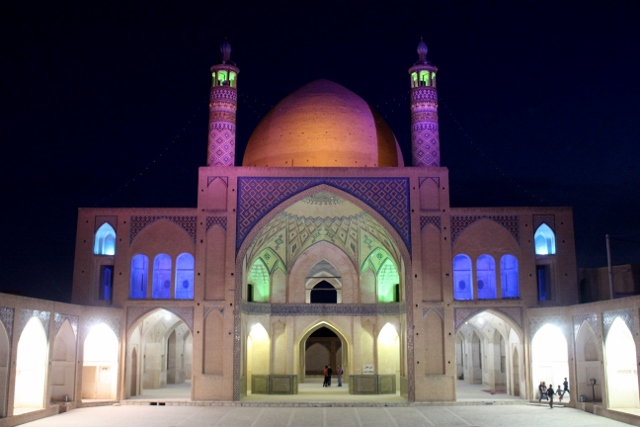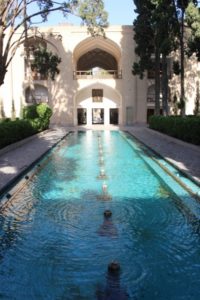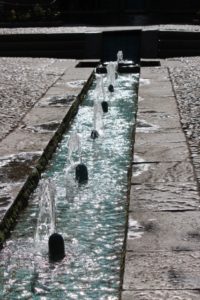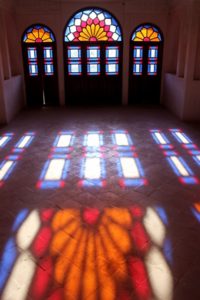
colours of stained glass projected on the floor of the Khan-e Tabatabei, one of the historical houses in Kashan
Touristic Kashan has a whole range of new attractions, like 150 year old merchant houses, and stairs to the roof of the bazaar, for an alternative view across town.
Although I complained a few days ago that we had seen it all, by now, I had not reckoned with Kashan. A smallish town in between Isfahan and Tehran, Kashan hasn’t got any mosques to write home about, neither castles. But Kashan has its historical houses, which refers to the mid-late 19th Century houses built by wealthy merchants, and the occasional governor.
Apparently, there are hundreds of those houses, hidden behind walls, where the crumble to dust without much maintenance. Some, however, have been restored, and are open to visitors. Others have been remodeled into boutique hotels, with rooms around a traditional courtyard, with pond and flowers, and with takhts – the hard flat beds used in Iran to sit on, use a meal, or a waterpipe, or just hang out without doing anything else. Boutique hotels are not our forte, I am afraid, but in Kashan we had no other choice, so we spent a night in the, admittedly lovely, Mahinestan Raheb Traditional Hotel – initially in a room that was just slightly bigger than the double bed, without space for suitcases, and without a curtain, so that everybody in that lovely courtyard could happily look inside our room (miraculously, after approaching the manager directly with our concerns, rather than the pretty useless and unresponsive front desk staff, there was suddenly another, much nicer room available).
Better than the hotels are the several traditional houses open to the public. These houses are built downwards: a narrow corridor, or steps, lead down to a courtyard, which is well below street level, around which several rooms have been constructed, one even more beautifully decorated than the other – think stuccoed patterns, frescos and paintings, and any other form imaginable. There were summer rooms and winter rooms, the latter designed to catch as much sun light, the former to catch as little sun light as possible. Cool rooms, for storage, were been dug even deeper, and some have large kitchens. The biggest houses have several court yards, many with pools, even fountains, and often there are upper floors, too, equally open to the courtyards below. In one word, fabulous. The most ostentatiously decorated, perhaps, was Khan-e Boroujerdi, the biggest, with several floors and several courtyards, was Khan-e Abbasian, and the nicest stained glas windows, colouring the floors in the late afternoon sunlight, was the Khan-e Tabatabei, all within walking distance of each other. In the same neighbourhood is also the Hamman-e Sultan Mir Ahmad, a 500 year old bath house which has been tastefully restored. Part of the attraction is the roof, with all the individual cupolas providing light in each of the rooms below.
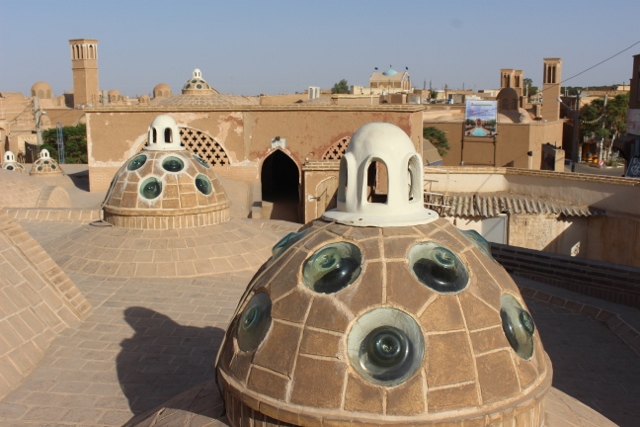
on the roof of the Hamman-e Sultan Mir Ahmad, each cupola provides light downstairs in one of the many rooms
Well, and then the bazaar. Although I complained earlier that we had seen enough of them, now, the Kashan bazaar proved a delight, and I don’t know exactly why. Perhaps it was the unpretentiousness, perhaps the relaxed atmosphere, or the friendly people. It was certainly not the architecture, neither the rather common caravanserais, although one of them, the Khan Amin al-Dowleh Timche, was outstanding in its authenticity. What also contributed to our experience was that we discovered the stairs to the roof of the bazaar, a very intersting structure in itself, as well as a prerfect vantage point from where to observe the rest of the town.
OK, we also went to see one mosque, the 19th Century Mashed-e Agha Bozorg. In the evening, when the multiple floors and the huge dome were floodlit with different colours. Nice, once again. Oh, and a garden, also not for the first time. Bagh-e Fin, or Fin Garden, is some 8 km out of town. Originally designed for Shah Abbas I, the paramount Safavid ruler in the 16th Century, the compound has been added to over time, benefitting form a natural spring that secures a water supply – evident from the various canals that criss-cross the garden. But we have seen nicer Persian gardens…
